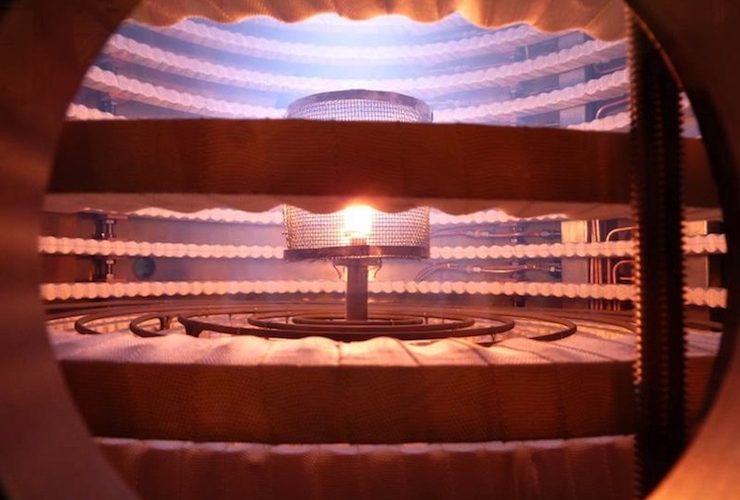The Plasma Couette Experiment (PCX). A magnet assembly consisting of 1.5 kG dipole magnets fastened to water cooled aluminum rings is dropped inside a vacuum vessel. Plasma is created with a LaB6 cathode heated and biased with respect to a molybdenum cage. Electrode rings placed between magnet rings are biased to create ExB rotation.
The Plasma Couette Experiment PCX demonstrates the mechanism by which matter is accreted onto black holes, protostars, and other compact objects. In particular, it is designed to study the magnetorotational instability in laboratory plasma. In the process, we are testing a concept for confining and spinning hot, dense plasma using a novel multidipole magnetic field and electrodes. The plasma produced is mostly unmagnetized and differentially rotating, and therefore it can be used for studying astrophysical processes in which the kinetic energy in the flowing plasma is much larger than the magnetic energy.
